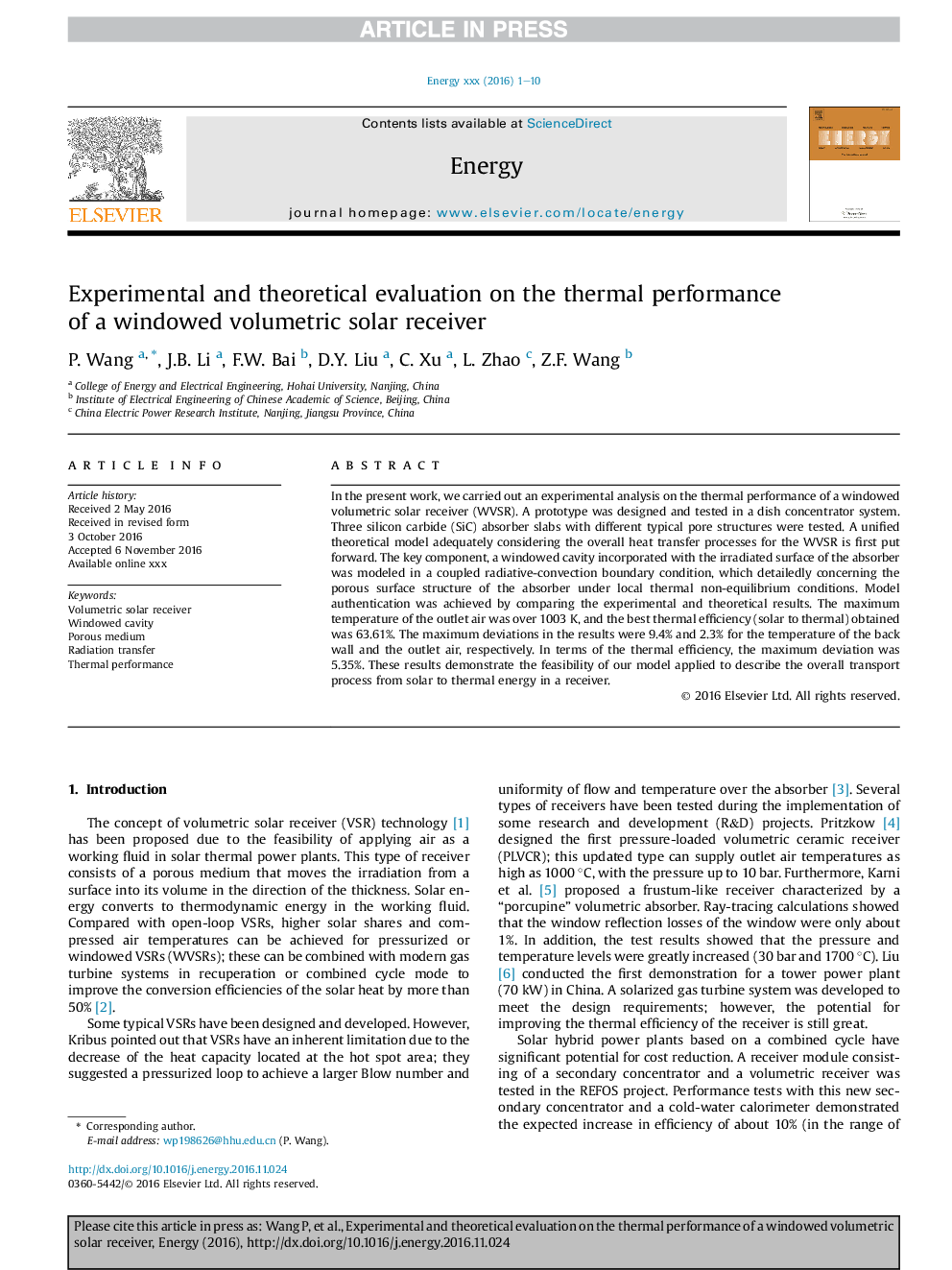| Article ID | Journal | Published Year | Pages | File Type |
|---|---|---|---|---|
| 5476913 | Energy | 2017 | 10 Pages |
Abstract
In the present work, we carried out an experimental analysis on the thermal performance of a windowed volumetric solar receiver (WVSR). A prototype was designed and tested in a dish concentrator system. Three silicon carbide (SiC) absorber slabs with different typical pore structures were tested. A unified theoretical model adequately considering the overall heat transfer processes for the WVSR is first put forward. The key component, a windowed cavity incorporated with the irradiated surface of the absorber was modeled in a coupled radiative-convection boundary condition, which detailedly concerning the porous surface structure of the absorber under local thermal non-equilibrium conditions. Model authentication was achieved by comparing the experimental and theoretical results. The maximum temperature of the outlet air was over 1003Â K, and the best thermal efficiency (solar to thermal) obtained was 63.61%. The maximum deviations in the results were 9.4% and 2.3% for the temperature of the back wall and the outlet air, respectively. In terms of the thermal efficiency, the maximum deviation was 5.35%. These results demonstrate the feasibility of our model applied to describe the overall transport process from solar to thermal energy in a receiver.
Related Topics
Physical Sciences and Engineering
Energy
Energy (General)
Authors
P. Wang, J.B. Li, F.W. Bai, D.Y. Liu, C. Xu, L. Zhao, Z.F. Wang,
